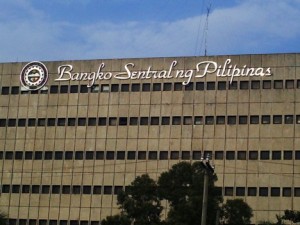
With the 25-basis-point reduction, the central bank’s overnight borrowing and lending rates now stand at 3.5 and 5.5 percent, respectively.
The rate cut followed three other 25-basis-point reductions undertaken in January, March and July.
With the new monetary policy—which influences commercial interest rates—the central bank expects people and enterprises to secure more bank loans and use the money to support consumption and investments.
The BSP expects that the crisis in the eurozone will persist and the US economic growth will continue to be lackluster. The problems of the industrialized nations in the West—key export markets of emerging economies—will affect the Philippines and other developing countries through reduced export earnings.
But the BSP said that the Philippine economy could still be able to maintain decent growth on the back of strong domestic demand.
“The Monetary Board [of the BSP] is of the view that monetary easing consistent with a manageable inflation outlook will help buffer domestic demand against ongoing global economic strains,” BSP Governor Amando Tetangco Jr. yesterday said after the meeting of the central bank’s Monetary Board.
Apart from boosting domestic demand, the change in monetary policy is expected to temper the appreciation of the peso, which currently hovers in the 43-to-a-dollar territory.
With lower interest rates, yields for peso-denominated securities are seen to drop as well, thereby easing demand for the portfolio assets. The potential decline in dollar inflows resulting from lower yields of the peso-denominated assets would ease the peso’s rise.
Also, the BSP said that the cut in interest rates would not cause inflation to breach the ceiling of 3-5 percent set for this year and the next.
BSP Deputy Governor Diwa Guinigundo said that latest estimates by the central bank showed that inflation would average at 3.3 percent this year and 3.9 percent next year.